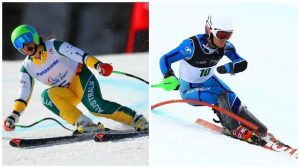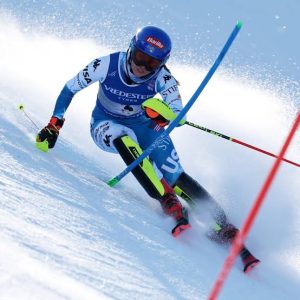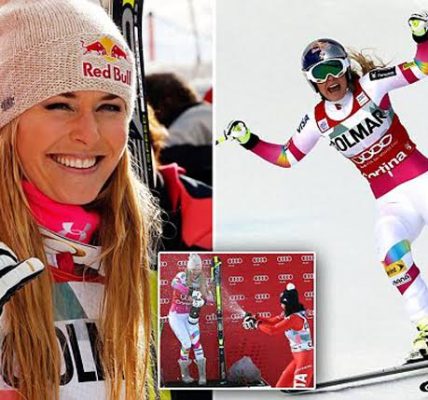In recent years, Alpine ski racing has undergone significant technological advancements that have reshaped the way athletes train and compete.
One of the most noteworthy innovations to hit the slopes is Nextfilt, an advanced filtration system that is revolutionizing the way athletes monitor their performance and prepare for the rigorous challenges of the sport. With its cutting-edge capabilities, Nextfilt is gaining traction among ski racers and teams worldwide.

What is Nextfilt?
Nextfilt is a state-of-the-art data analytics platform designed to measure, process, and enhance the performance of athletes in high-intensity sports like Alpine ski racing.
It integrates various environmental factors, real-time monitoring, and detailed analysis of a skier’s movements. By collecting data from sensors placed on the skier’s body and from environmental sources like weather conditions, Nextfilt can provide comprehensive insights into an athlete’s performance.
Nextfilt’s data-driven approach is allowing ski teams to fine-tune their strategies, making every run more precise and impactful. From the individual skier’s form to environmental conditions, the system allows coaches and athletes to make informed decisions that significantly influence race outcomes.
How Nextfilt is Changing Training
Ski racing, as an elite sport, requires athletes to balance speed, technique, and adaptability in the most extreme conditions. Historically, training focused on repetition, trial and error, and personal feedback from coaches. However, Nextfilt’s introduction has led to more data-centric methods that can accelerate improvement.

The system’s ability to monitor various factors like snow density, temperature, altitude, and even wind speed allows athletes to adapt their techniques to the unique conditions they will face on race day.
Training under varied conditions becomes not only easier but more effective, as athletes can simulate different environments and adjust their strategies accordingly. This data-centric approach allows coaches to design customized training plans that target specific areas for improvement, such as carving technique, edge control, or gate anticipation.
By providing real-time feedback during training, Nextfilt has also drastically reduced the risk of injury. Coaches can use data to detect patterns in an athlete’s movements that could lead to strain or improper form. If a skier consistently lands in a specific posture that could cause stress on their knees, for instance, the system will flag it, enabling the coach to intervene before injury occurs.
Performance Optimization
On race day, every millisecond counts. Alpine ski races are often won or lost by fractions of a second, making any edge that athletes can gain crucial. This is where Nextfilt’s real-time performance analytics come into play. The system integrates a variety of sensors worn by athletes, such as GPS trackers, accelerometers, and gyroscopes, which provide comprehensive feedback on speed, turns, and technique.

Nextfilt’s data also gives athletes valuable insights into the perfect line to take on each section of the course. By analyzing previous runs, it can suggest the best approach to each turn, helping skiers optimize their trajectory and reduce unnecessary time lost during the race. In particular, the system focuses on angles, body positioning, and reaction times to maximize efficiency and reduce drag.
For example, in a technical discipline like slalom, the system can recommend the precise turning radius that minimizes deceleration while maintaining control. In speed events like downhill, Nextfilt helps athletes keep their bodies in the optimal aerodynamic position, cutting through the air with minimal resistance. These kinds of granular optimizations are now possible thanks to Nextfilt’s combination of technology and data.
Collaboration with Top Athletes and Teams
Nextfilt’s impact on Alpine ski racing has not gone unnoticed by top athletes and professional teams. Several world-class skiers have already started incorporating the system into their training regimens. Ski legends like Mikaela Shiffrin and Alexis Pinturault have been spotted working with Nextfilt to further sharpen their already formidable skills.
Shiffrin, known for her dominance in slalom and giant slalom, has praised the system for its ability to break down her race performance in real-time, providing insights she has never had before. She uses the data to adjust her lines and refine her posture during the most challenging moments of the race. Similarly, Pinturault, a multi-discipline skier, uses Nextfilt to tailor his approach based on the course layout and weather conditions, ensuring he’s in peak form during each race.
The Future of Alpine Ski Racing
The integration of Nextfilt into the Alpine ski racing landscape signifies a broader shift toward data-driven sports technology. As the system continues to evolve, it’s expected that more teams, coaches, and athletes will rely on its powerful capabilities to push the limits of what is possible on the slopes.
As the sport becomes even more competitive, these technological innovations will likely become indispensable. Nextfilt’s ability to refine training, enhance race performance, and reduce injuries may very well mark the beginning of a new era in Alpine ski racing — one where precision and performance are taken to the next level.
In the coming years, it’s not hard to imagine a world where every ski racer, from budding talents to Olympic champions, uses Nextfilt to unlock their full potential. The technology is here to stay, and it will likely continue to shape the future of Alpine ski racing for years to come.




